Hera is scheduled to arrive at the Didymos/Dimorphos binary asteroid system at the end of 2026, where it will gather otherwise unobtainable data about the mass and makeup of both bodies and assess the changes caused by the DART spacecraft’s kinetic impact.
15.03.2024
Shoebox-sized Milani CubeSat joining Hera asteroid mission
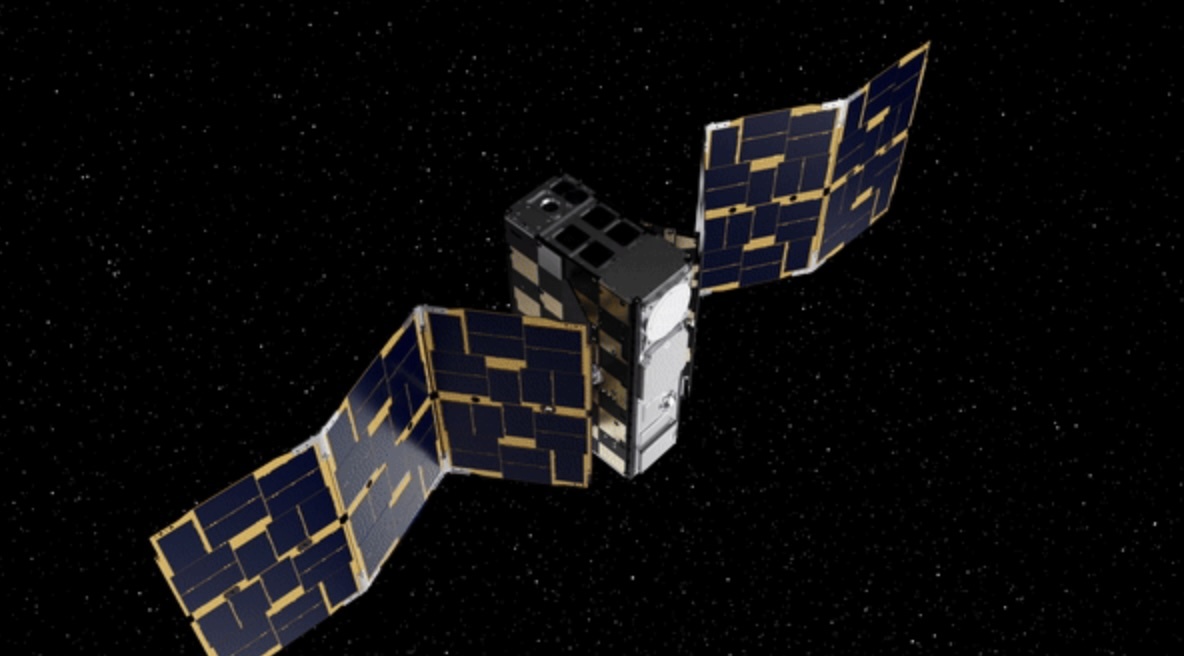
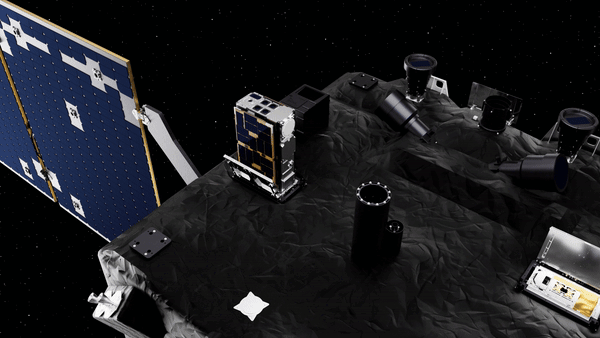
The shoebox-sized Milani CubeSat, which will perform close-up mineral prospecting of the Dimorphos asteroid, is ready for delivery to ESA’s Hera asteroid mission for planetary defence. The spacecraft will carry Milani and a second CubeSat, the Juventas radar imaging spacecraft for probing into the target asteroid, which together will be ESA’s first CubeSats to operate in deep space.
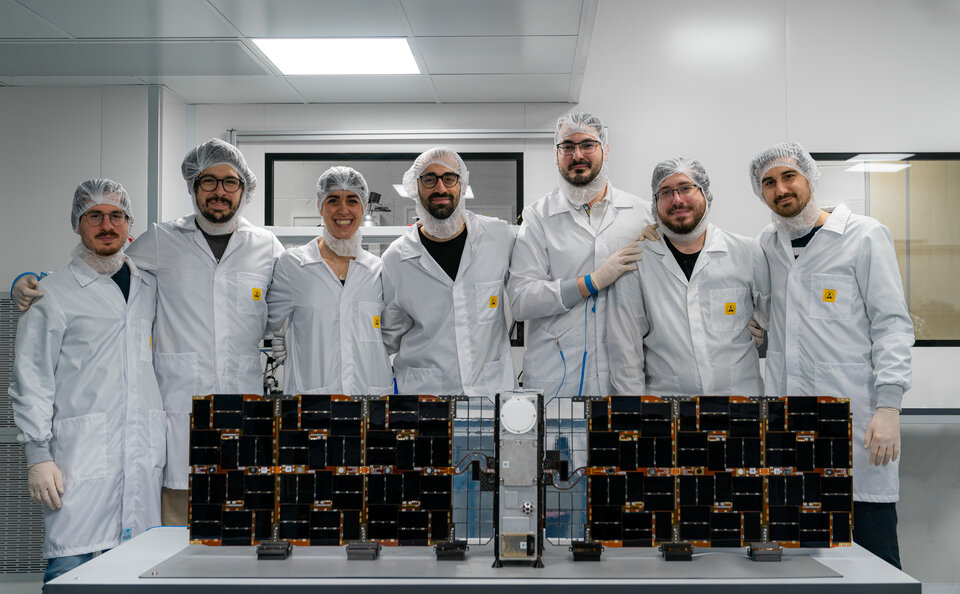
Funded through the Italian Space Agency, ASI, the Milani CubeSat was shown to the press at the premises of its prime contractor Tyvak International in Turin. It will now be flown to ESA’s ESTEC Test Centre in the Netherlands, where Hera is currently undergoing pre-flight testing, for integration with its mothership and subsequent validation of the inter-satellite link system that will connect Hera, Milani and Juventas as they fly around the Didymos system.
“This is a paramount achievement for Tyvak International,” explains Margherita Cardi, VP Programmes for Tyvak International and Milani Programme Manager. “Milani is now ready to be delivered to ESA and undergo the system tests with Hera, to ensure the validation of the interfaces and the end-to-end communication prior to the launch. The journey is not over, but we are a step closer to Didymos, and it was a real honour to host here at Tyvak all the persons who contributed to this amazing project and celebrate together this achievement.”
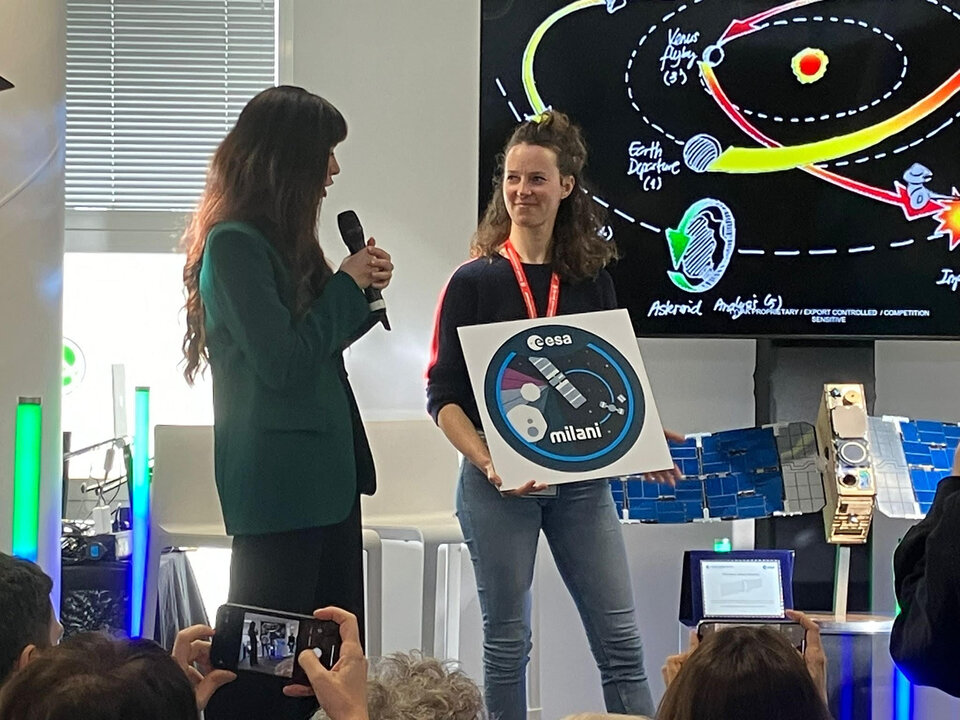
Origin of Hera mission
Also present at Milani’s delivery event was Alice Milani, daughter of the man the CubeSat was named for. Andrea Milani, professor of mathematics at the University of Pisa, was a planetary defence pioneer who first devised what became ESA’s Near Earth Object Coordination Centre, based at the Agency’s ESRIN centre in Frascati, Italy. Then in 2004 he proposed the idea of a double spacecraft planetary defence mission called Don Quijote. One spacecraft – called Hidalgo – would impact a non-threatening asteroid while another spacecraft – called Sancho – would gather data to validate asteroid impact models.
His proposal evolved into the NASA’s DART mission (formerly Hidalgo) – which in 2022 diverted the orbit of Dimorphos around Didymos – and the follow-up Hera mission (formerly Sancho) to gather close-up data on the mass and makeup of the asteroid and DART’s impact site. Sadly, Andrea never lived to see the implementation of his idea, passing away unexpectedly in 2018.
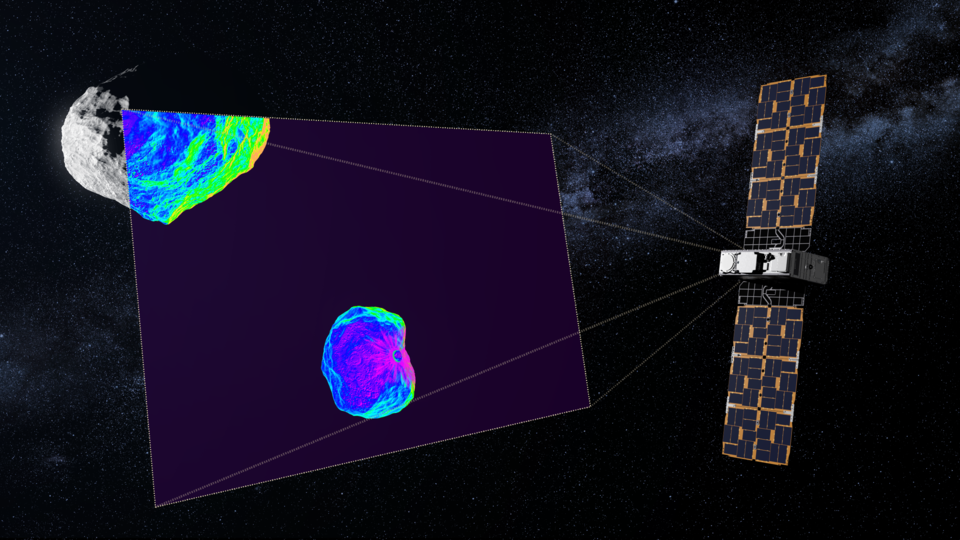
Milani to stay linked with its mothership
Milani will survey Dimorphos as well as the larger Didymos object that the asteroid orbits around in a wider range of colours than the human eye can see, to identify the mineral makeup of the asteroids and even individual boulders resting on them. It will also survey the dust environment surrounding these bodies. And the inter-satellite link system between the Hera mothership and its smaller companions will track small tugs in their relative positions due to the gravitational pulls of the asteroids, helping to assess their mass.

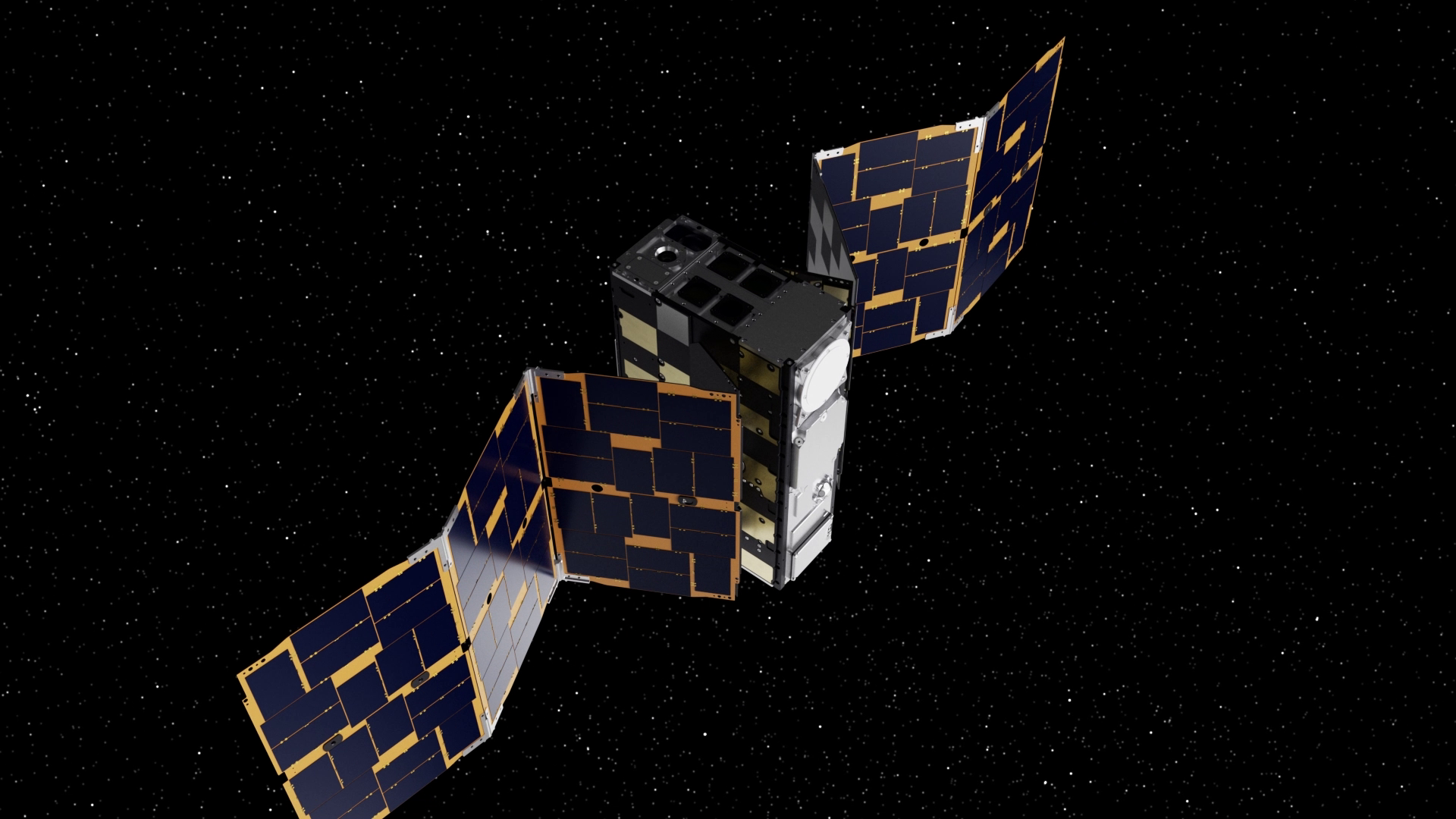
Access the video
But the miniature Milani is also a full-fledged spacecraft in its own right, incorporating a visible light camera, laser altimeter and star trackers for navigation, plus a cold gas propulsion system. While Hera will orbit about 20 – 10 km from the asteroids, Milani will risk lower altitudes, starting at 10 km and coming as close as 2 km. Going into a traditional orbit around the Didymos system is impractical because of its extremely low gravity. Instead Milani will fly a series of ‘hyberbolic arcs’ in its vicinity, like repeated flybys involving its thrusters regularly changing direction to remain as close as required.
Finally, Milani will attempt a landing on Dimorphos. Its onboard gyros and accelerometers will gather valuable data on the landing and any subsequent low-gravity bounces, to give insight into the surface properties of the asteroid.
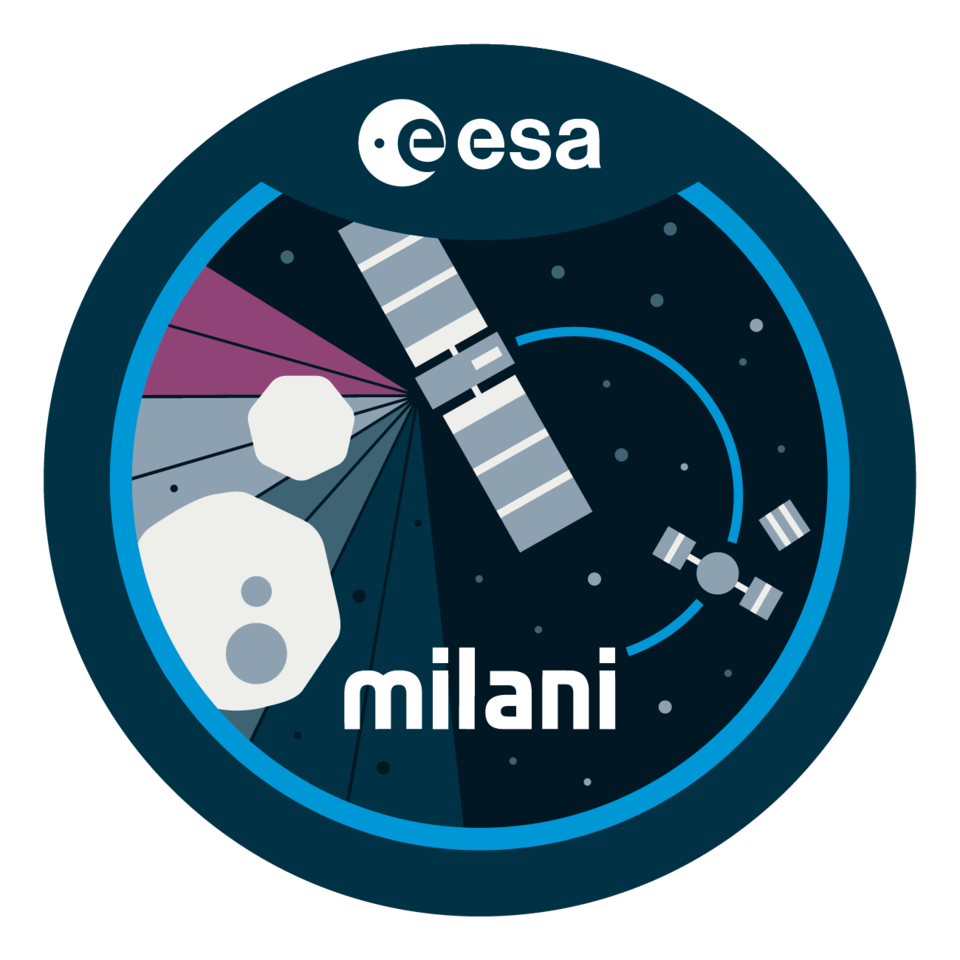
First ESA CubeSats in deep space
CubeSats are small, low-cost satellites built up from 10 cm boxes, traditionally employed for educational purposes but increasingly finding operational uses in Earth orbit. Milani and Juventas will be the first ESA CubeSats to remain several months in deep space, operating in close proximity to a small Solar System body.
They will spend Hera’s two-year cruise phase to Didymos inside a pair of ‘Deep Space Deployers’ which will keep them alive and healthy. The pair will be deployed one at a time, starting with a partial deployment to check each CubeSat’s functionality. Finally, they will be deployed at just a few centimetres per second – any faster and they would risk being lost in space within the prevailing low gravity.
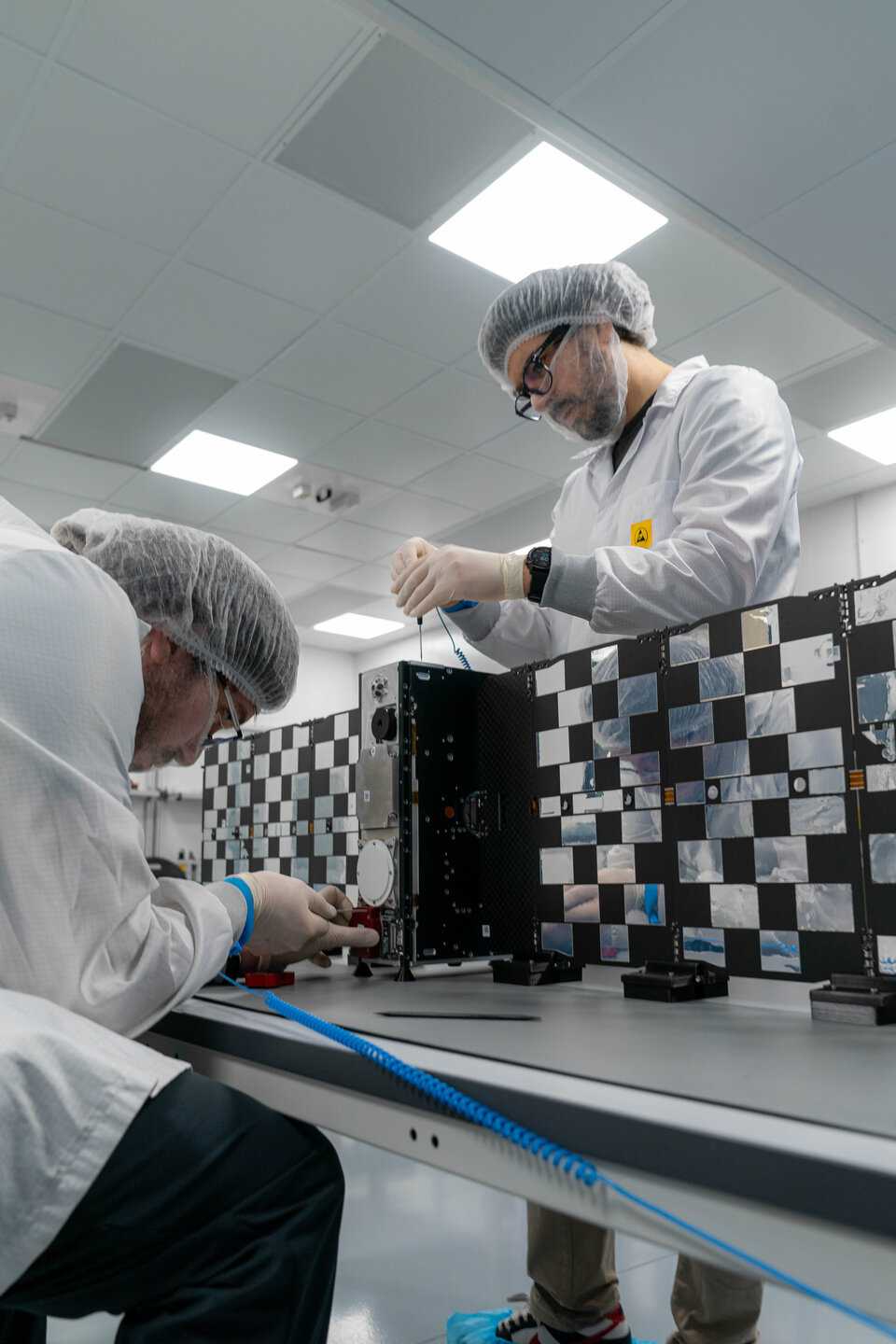
Milani instruments
Milani is a ‘6-unitXL’ CubeSat measuring just 13 x 24.6 x 36.6 cm in size. On one side of Milani are the four sensors of its main ASPECT, Asteroid Spectral Imager, instrument developed by the VTT Technical Research Centre of Finland, which will image the asteroids in visible, near and shortwave infrared bands.
“ASPECT is a hyperspectral imager whose heritage goes back to a series of instruments flown on drones, variously used for agricultural, forestry and pollution monitoring,” explains Antti Näsilä, Principal Scientist and ASPECT project manager at VTT.
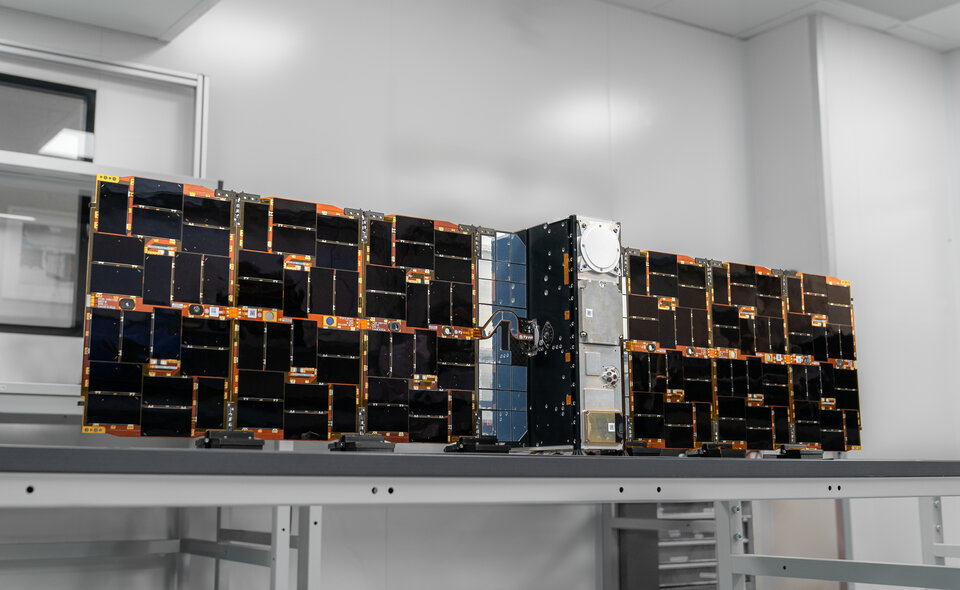
“So the miniaturisation involved meant that switching to CubeSats was a straightforward transition, and a predecessor version of the instrument flew on Finland’s first CubeSat, Aalto-1 in 2017. But despite ASPECT’s small size it is extremely complex, with each of the four channels requiring roughly 50 control signals each, criss-crossing through the instrument.”
MILANI’s second instrument is VISTA, Volatile In-Situ Thermogravimetre Analyser, an Italian-built dust detector. This is based on quartz microcrystals whose piezoelectric responses are altered slightly by the adhesion of tiny dust particles.
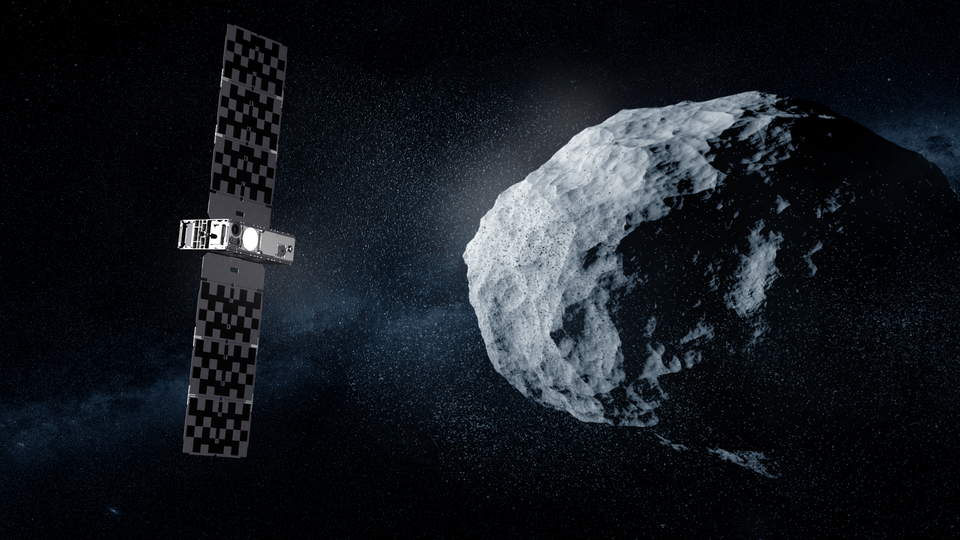
Ernesto Palomba of Italy’s Istituto di Astrofisica e Planetologia Spaziali, VISTA’s principal investigator, explains: "On Earth this same precision technology is used in analytical laboratories and checking thin film deposition processes. VISTA will use it to identify water and other volatile species around the asteroids, as well as the presence of dust. We hope our instrument will be able to keep operating even on the surface of Dimorphos.”
Hera’s ESA system engineer Franco Perez Lissi Comments: ”ESA’s first deep-space CubeSat was developed in record time by an incredible team. ESA is extremely impressed by the skills, motivation and commitment of Tyvak International. We are eager to see the spacecraft in action, helping us to unveil the many mysteries of the Didymos asteroid system.”


Virtual flying lessons for Hera asteroid mission
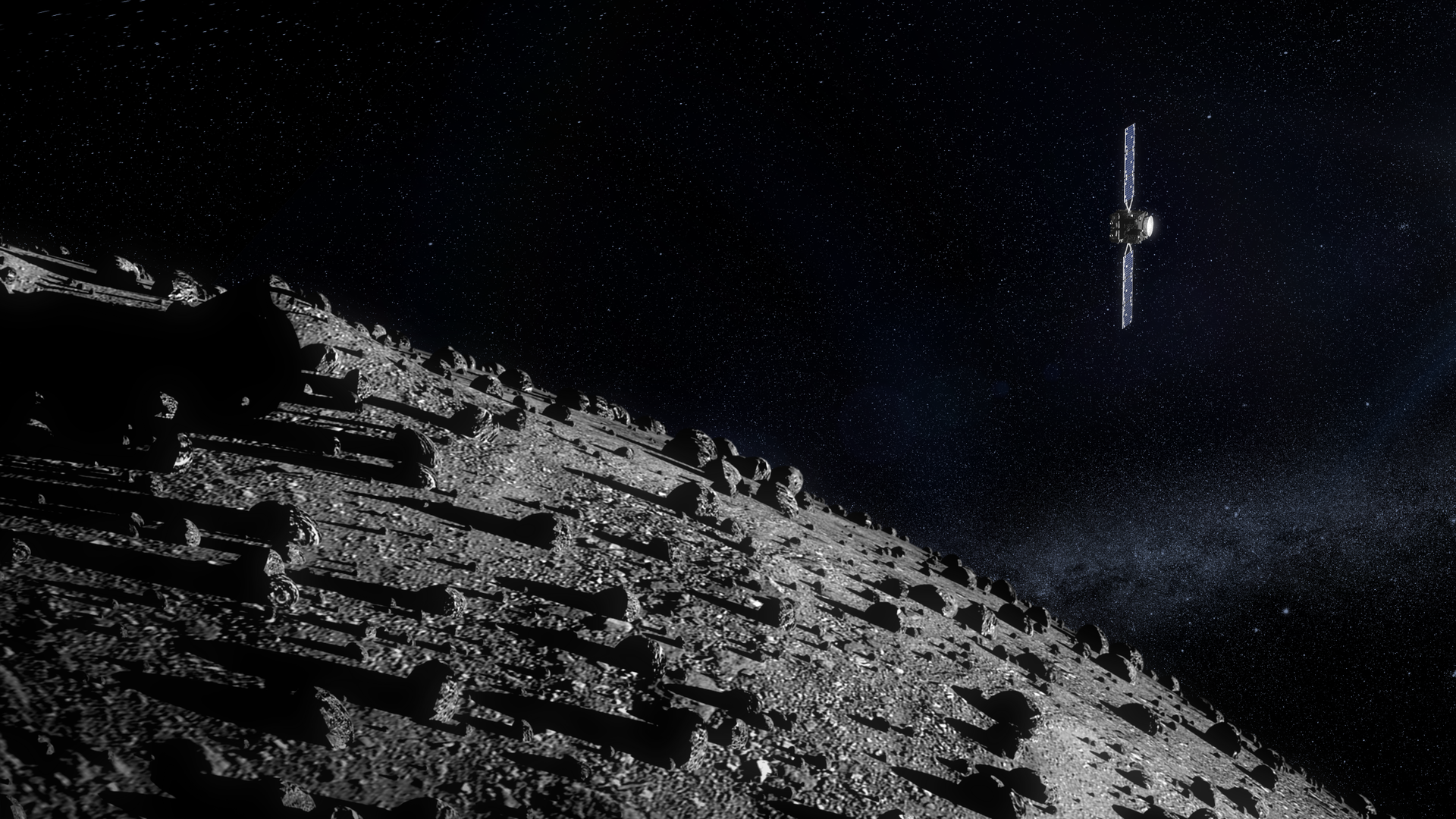
As ESA’s Hera spacecraft for planetary defence goes through pre-flight testing, the system that will steer it around its target binary asteroid system is also undergoing its final checks for space.

Validation of the mission’s Guidance Navigation and Control system’s readiness for proximity operations within this challenging, ultra-low gravity environment through a long series of virtual manoeuvres, carried out in parallel in Spain and Germany.
At the headquarters of Guidance Navigation and Control (GNC) system developer GMV in Madrid, a replica of Hera’s On-Board Computer is currently being put through proximity operations around a model asteroid imaged with a camera, for maximum realism, with other sensors and actuators emulated using customised ‘check-out’ equipment.

Meanwhile at the premises of spacecraft manufacturer OHB in Bremen, tests are taking place using a full-scale hardware replica of the spacecraft, called the Hera Avionics Test Bench.
“The system for Hera’s interplanetary cruise phase – which of course is the most critical to be ready for launch – is now fully tested using the actual spacecraft flight model,” explains ESA GNC engineer Jesus Gil Fernandez.
“This phase will end at asteroid arrival when camera images will be used to distinguish the asteroid from background stars by spotting its gradual motion across successive images. GNC for the follow-on proximity operations phase is what we are concentrating on now, involving the spacecraft initially coming as close as 30 km from the asteroid pair, then much closer later on, down to 1 km.”


Access the video
Alien, ultra-low gravity environment
Following its lift-off this October, Hera is headed for a distinctively alien environment. After a two-year cruise through space, including a Mars flyby that will be used to take science observations of Deimos, the spacecraft will rendezvous with the Didymos binary asteroid system: the Dimorphos moonlet, about the size of the Great Pyramid of Giza, is in orbit about 1.2 km away from the mountain-sized Didymos main body.
The combined gravity fields of these two asteroids are tens of thousands of times weaker than Earth’s.
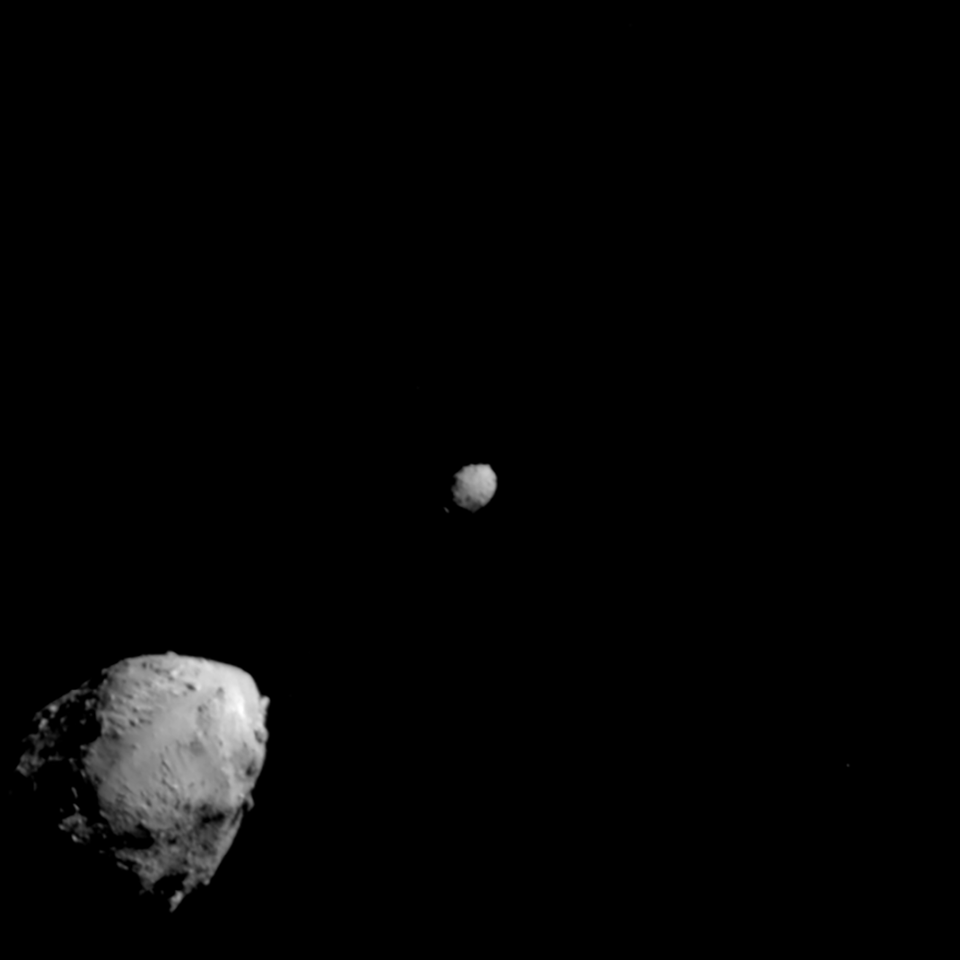
Adding to the exotic nature of this destination, Dimorphos has already undergone a change of orbit around Didymos, after NASA’s DART spacecraft impacted with it in September 2022. And this impact is likely to have reshaped the asteroid in dramatic fashion.
Data fusion for environmental mapping
To operate safely around Didymos, Hera has a high degree of onboard autonomy. Its Guidance, Navigation and Control (GNC) system is designed to fuse data from various sources to build up a coherent picture of its surroundings, in a similar approach to self-driving cars.

“Its main data source will be its main Asteroid Framing Camera, whose images are being used both for science and navigation,” adds Jesus. “These images will be combined with other inputs to make a robust estimate of its position, notably the mission’s PALT-H laser altimeter, which bounces down laser pulses to the asteroid’s surface, as well as inertial sensors. This GNC system is designed to be operated manually from the ground initially, but once Hera’s CubeSats are deployed, autonomous navigation will be needed to fulfil core mission objectives.”
During proximity operations, Hera will keep Didymos framed in its camera as an overall reference point, detecting the contrast between the asteroid’s edges and the deep space around it. The detected shape will be compared with a predicted spherical model. Later on, when the spacecraft comes closer than about 10 km from Didymos and more than 2 km above Dimorphos, an image processing technique called ‘centre of brigthness’ will be used, focused on the average position of Sun-illuminated pixels, due to the smaller asteroid's complex and uncertain shape.

Hyperbolic arcs to maintain position
The gravity levels of the two asteroids are too low for the spacecraft to go into orbit in any traditional sense. Instead (borrowing a technique from ESA’s Rosetta comet-chaser) Hera will fly in ‘hyperbolic arcs’ – resembling a series of alternating flybys, reversed by regular thruster firings every three to four days. In the case of any normal mission, this amount of repeat velocity changes would soon exhaust its propellant tanks, but the gravity level around Didymos is so low that Hera will only be flying at a typical relative velocity of around 12 cm per second.
“Hera’s hyperbolic arcs are designed so that if a thruster firing has a small error then the spacecraft would keep at a safe distance from the asteroids anyway,” adds Jesus. “However, the low velocities involved mean that the orbital manoeuvres that bring Hera very close to the asteroids need to be executed very accurately, otherwise there might still be a collision risk. Thus, the GNC includes an autonomous trajectory correction system, plus an autonomous collision risk estimation system empowered to perform collision avoidance manoeuvres as needed.”

Surface feature tracking
Hera’s self-driving autonomy will really come into its own as the spacecraft nears the asteroids later in its mission, Jesus explains: “Once we come closer than 2 km then Dimorphos will fill the camera’s field of view. Then comes the most ambitious navigation mode of all, based on autonomous surface feature tracking with no absolute reference. This will be a matter of imaging the same features – such as boulders and craters – in successive pictures to gain a sense of Hera’s altitude and trajectory with respect to the surface.”
Feature identification and mapping will also be used to derive the mass of Dimorphos, although this technique will be performed from the ground rather than aboard the spacecraft.

Mission controllers will measure the ‘wobble’ the moonlet causes to its parent, relative to the common centre of gravity of the overall Didymos system. This will be achieved by identifying small metre-scale variations in the rotation of fixed landmarks around this centre of gravity over time.
GNC testing of some of the modes in this final experimental phase will continue after launch, to prepare the spacecraft ahead of its October 2026 arrival at Didymos.

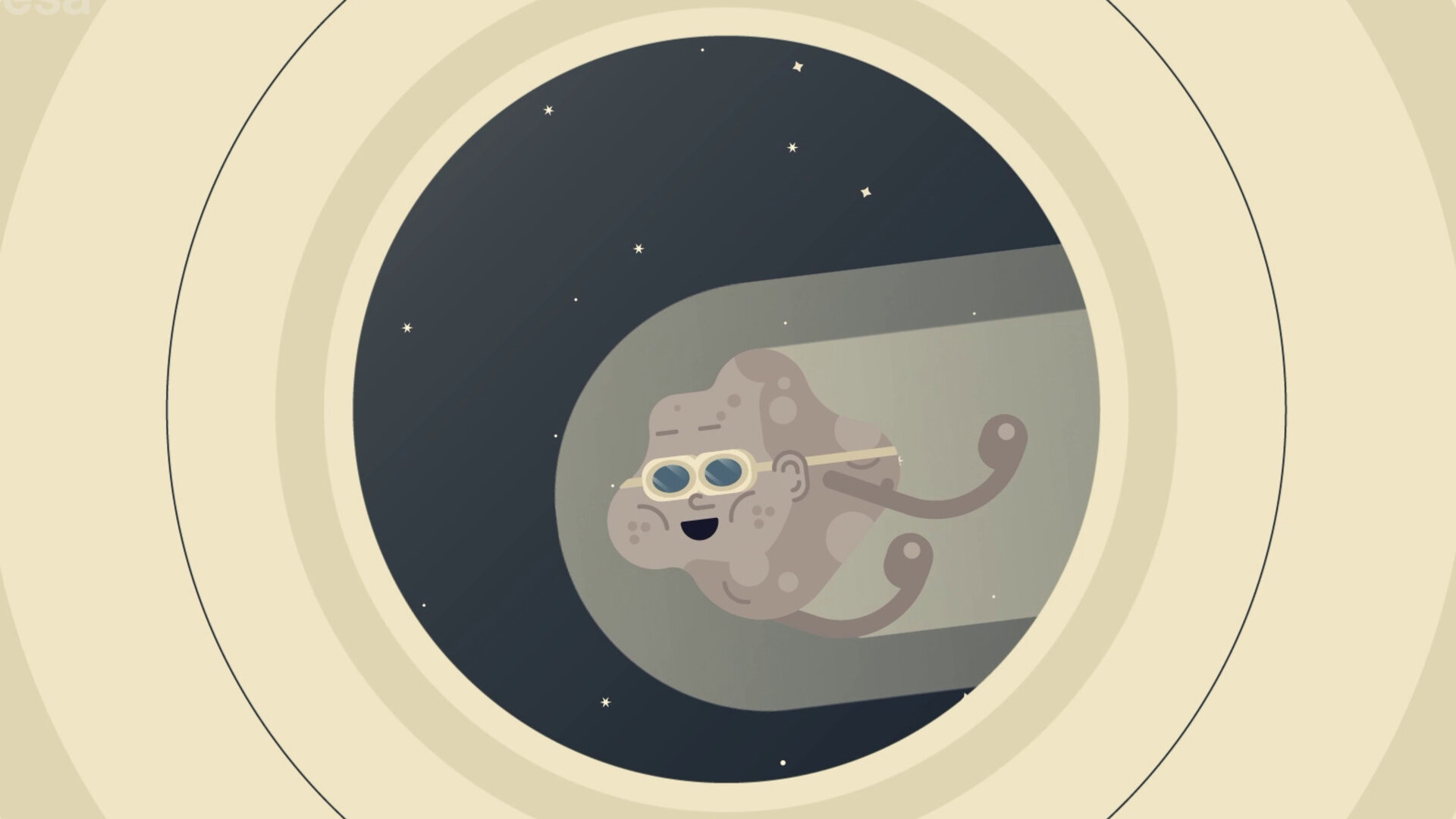
Access the video
NASA Selects Participating Scientists to Join ESA’s Hera Mission
NASA has selected 12 participating scientists to join ESA’s (European Space Agency) Hera mission, which is scheduled to launch in October 2024. Hera will study the binary asteroid system Didymos, including the moonlet Dimorphos, which was impacted by NASA’s DART (Double Asteroid Redirection Test) spacecraft on Sept. 26, 2022. The objectives of DART and Hera collectively aim to validate the kinetic impact method as a technology to deflect an asteroid on a collision course with Earth, if one is ever discovered, and to learn more about the near-Earth asteroids that are the source of this natural hazard.

The goal of NASA’s Hera Participating Scientist Program is to support scientists at U.S. institutions to participate on the Hera mission and address outstanding questions in planetary defense and near-Earth asteroid science. The participating scientists will become Hera science team members during their 5-year tenure with the mission.
The newly selected participating scientists are:
- Bonnie Buratti – NASA’s Jet Propulsion Laboratory, Southern California
- Ingrid Daubar – Brown University, Providence, Rhode Island
- Carolyn Ernst – Johns Hopkins Applied Physics Laboratory
- Dawn Graninger – Johns Hopkins University Applied Physics Laboratory
- Mark Haynes – NASA JPL
- Masatoshi Hirabayashi – Georgia Institute of Technology, Atlanta
- Tim Lister – Las Cumbres Observatory, Goleta, California
- Ryan Park – NASA JPL
- Andrew Rivkin – Johns Hopkins Applied Physics Laboratory
- Daniel Scheeres – University of Colorado, Boulder
- Timothy Titus – U.S. Geological Survey, Flagstaff, Arizona
- Yun Zhang – University of Michigan, Ann Arbor
DART was the first planetary defense test mission from NASA’s Planetary Defense Coordination Office, which oversees the agency’s ongoing efforts in planetary defense. International participation in DART and Hera, including the Hera Participating Scientist Program, has been enabled by an ongoing worldwide collaboration in the planetary defense research community known as the Asteroid Impact and Deflection Assessment.
DART was designed, built, and operated by the Johns Hopkins Applied Physics Laboratory (APL) in Laurel, Maryland, for NASA’s Planetary Defense Coordination Office, which oversees the agency’s ongoing efforts in planetary defense.
Quelle: NASA
----
Update: 30.06.2024
.
Countdown to Hera: launch campaign begins at ESOC

ESA’s Hera mission is due to launch in October this year on a quest to survey the Didymos binary asteroid system and study the results of the first-ever test of asteroid deflection.
The spacecraft is currently undergoing its final system tests in the Netherlands in preparation for transport to its launch site in the USA. Meanwhile, in Germany, Hera’s Mission Control Team recently began launch preparations of their own.

Based at ESA’s European Space Operations Centre(ESOC), the Hera operations team is a mix of ESA veterans who have worked on missions such as the Rosetta comet chaser and new recruits who started flying spacecraft last year.
It is this team that will take control of Hera moments after it soars into the sky and navigate it through its two-year interplanetary journey to Didymos – via Mars.
Putting the Hera team to the test

Last week, the Hera Mission Control Team kicked off the most intense phase of their launch preparations – the simulations campaign.
The simulations campaign brings together all the teams involved in Hera’s operations. The flight control, flight dynamics and ground systems teams at ESOC will work closely with the Hera project team from ESTEC and teams from Hera’s manufacturers over the next three months.
Together, they will practice pre- and post-launch mission scenarios again and again until they are ready for any contingencies, under the motto 'hope for the best, prepare for the worst'.
As the campaign progresses, the teams will encounter increasingly serious issues with their systems and with the simulated, software-only Hera spacecraft they use for training. These issues are not random: hidden away in a room below ESOC’s Main Control Room, Simulations Officers carefully introduce subtle errors that are often difficult to trace back to their root cause.
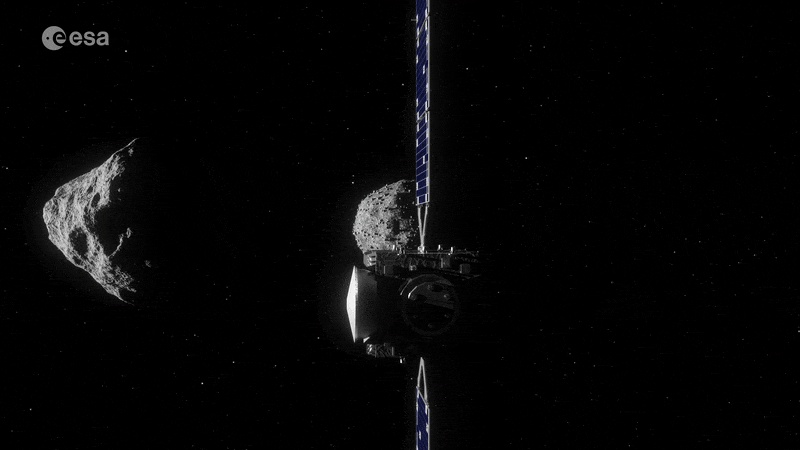
During one of the first simulations, for example, a member of the Hera flight control team noticed that the output from one of the spacecraft's Sun sensors was lower than it should be, indicating that Hera might not be correctly oriented towards the Sun. The team determined that the cause was likely either that the surface of the sensor was contaminated, blocking some of the Sun’s light from reaching it, or an electrical issue with the sensor itself.
They correctly decided to switch to the back-up sensor, fixing the issue, but it wasn’t long until they faced another. The flight dynamics team soon discovered that Hera was experiencing an unexpected turning force (torque) that its thrusters had to counteract to prevent the spacecraft from spinning around. The team now had to decide how to handle this new challenge while keeping in mind all of the other limitations introduced up to this point.
“Spacecraft operations involves a lot of problem solving and decision making – often under time pressure. It’s our job to unite the team and train them to work together seamlessly,” says Simulation Officer Petr Shlyaev. “So far, the Hera team are doing even better than we expected.”
Planetary defence at ESA
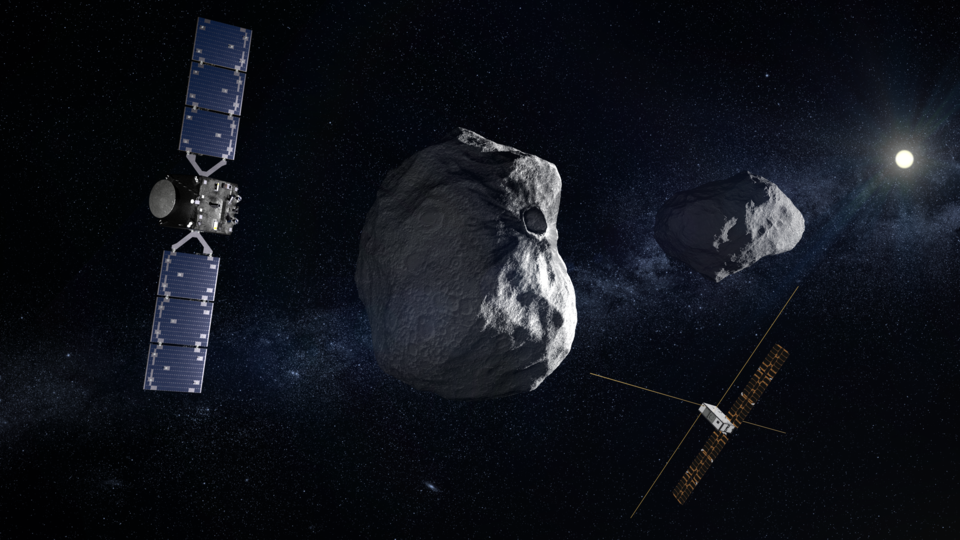
Hera is the first spacecraft mission developed under ESA’s Space Safety programme and the first ESA mission outside of its scientific programme to fly beyond Earth orbit.
As part of the world’s first test of asteroid deflection, Hera is at the heart of the efforts of the programme’s Planetary Defence Office.
The Office is tasked with detecting and monitoring potentially hazardous near-Earth asteroids and comets and assessing the likelihood and consequences of Earth impacts via its Near-Earth Object Coordination Centre, and with developing methods to mitigate the danger.
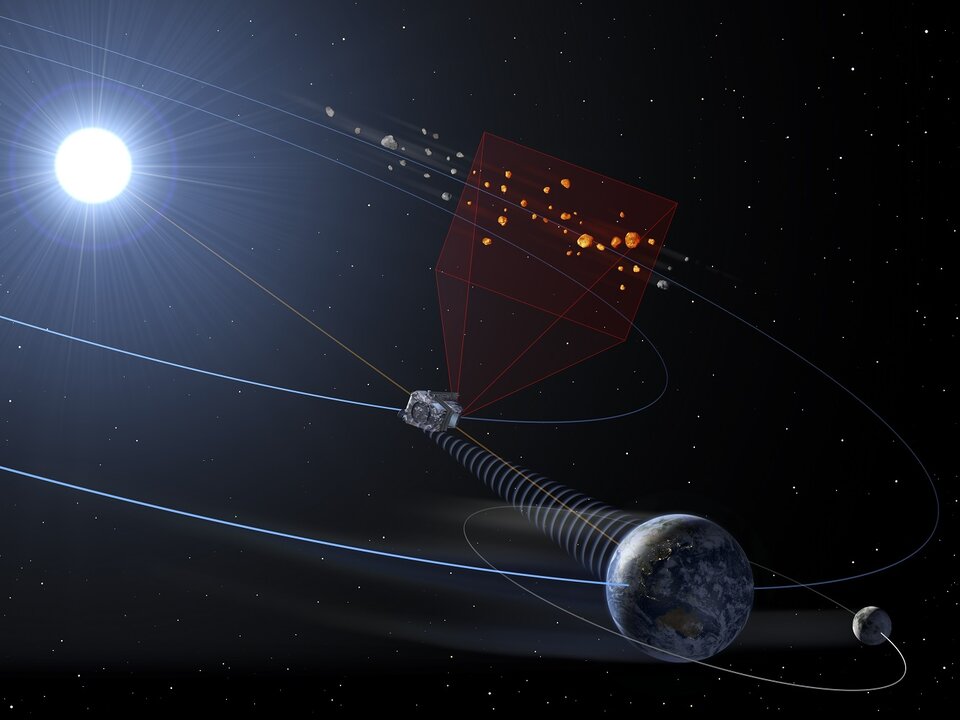
The Office’s other projects include the Flyeye telescopes, automated telescopes with an extremely wide field of view that will scan the entire sky every night and alert human astronomers of possible asteroid detections the next morning.
The NEOMIR satellite will use infrared light to spot asteroids that approach our planet from the region of the sky obscured by the intense glare of our star, and which therefore cannot be seen by ground-based telescopes such as Flyeye.
ESA also supports Asteroid Day, the UN-endorsed day dedicated to raising public awareness of asteroids, held annually on 30 June. Members of the Hera team are taking part in Asteroid Day activities this week.
Quelle: ESA
